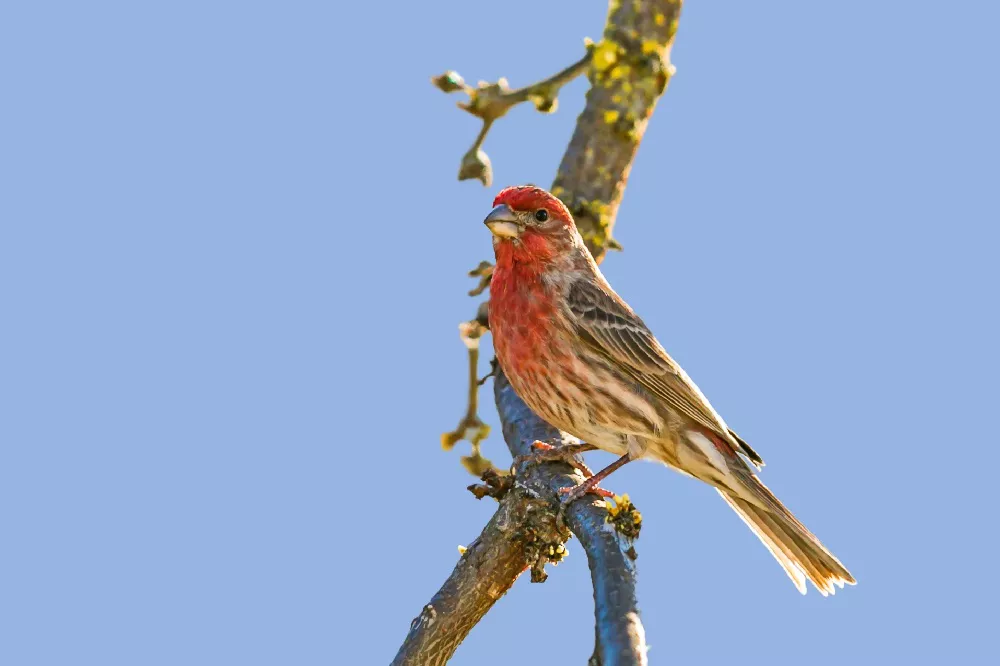The male house finch, also known as the western house finch or the HOFI, is a small songbird that is native to western North America. These birds are known for their colorful plumage and distinctive song, and are a common sight in urban and suburban areas.
Physical Description:
The male house finch is a small bird, measuring approximately 5 inches in length and weighing around 0.8 ounces. They have a plump, rounded body and a short, conical beak that is ideal for cracking open seeds. The males have a bright red head, breast, and rump, with brownish-gray wings and back. The red coloration of the males is caused by carotenoid pigments in their diet, which they obtain from fruits and berries.
Behavior:
Male house finches are known for their lively and melodic song, which they use to attract mates and establish their territory. They are social birds and can often be seen in small flocks, especially during the winter months when food is scarce. They are primarily seed-eaters, and will visit backyard feeders to eat sunflower seeds, thistle, and other seeds. They may also eat insects, especially during the breeding season when they need extra protein to feed their young.
Habitat:
House finches are adaptable birds that can be found in a variety of habitats, from deserts and grasslands to urban and suburban areas. They are commonly seen in parks, gardens, and backyards, where they can find food and shelter. They build nests in trees, shrubs, and other vegetation, and may also use nest boxes provided by humans.
Threats:
Male house finches are generally not threatened, although they may be impacted by habitat loss and other human activities. They are sometimes trapped and sold illegally as pets, and may also be vulnerable to predation by cats and other animals. In addition, they may be affected by diseases such as avian pox and conjunctivitis, which can be transmitted at bird feeders and other communal feeding sites.
In conclusion, the male house finch is a colorful and charismatic bird that is well adapted to life in urban and suburban areas. With its distinctive red plumage and lively song, it is a common sight at backyard feeders and in parks and gardens.


 Facebook
Facebook  Instagram
Instagram  Youtube
Youtube 